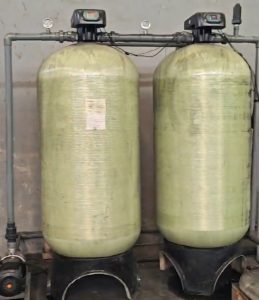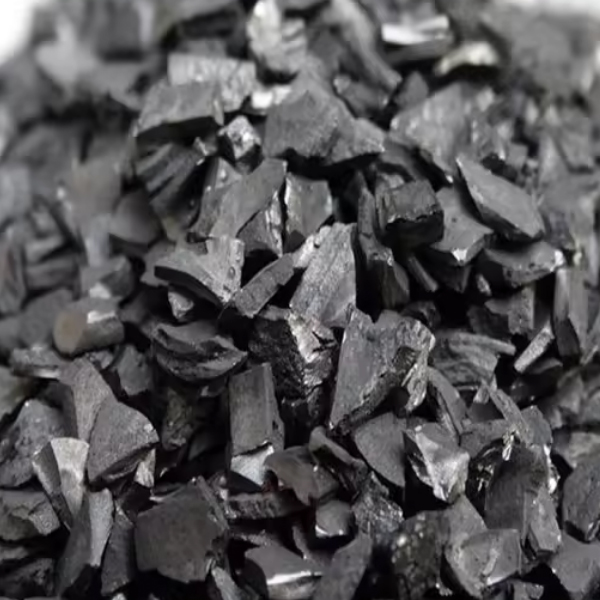Water purifiers are common water treatment equipment in modern life. Coconut shell activated carbon, as one of its core filter materials, can absorb harmful substances in water and improve water quality.

As the water purifier runs for a long time, the coconut shell activated carbon’s use time increases, and its adsorption capacity gradually weakens. Therefore, regular replacement of activated carbon is a must to ensure the efficient operation of the water purifier.
- The necessity of replacing activated carbon in water purifiers
Activated carbon is made from coconut shells and has a developed microporous structure and a huge specific surface area. It can effectively absorb impurities such as odor, pigment, residual chlorine, organic matter, and microorganisms in water. When the adsorption capacity of activated carbon is gradually saturated, it can no longer efficiently filter pollutants in the water. At this time, it needs to be replaced, otherwise the filtering effect of the water purifier will be greatly reduced, and even cause water pollution.
- Specific process of replacing activated carbon in water purifier
2.1. Prepare the necessary tools and materials
Before replacing activated carbon, the operator needs to prepare the necessary tools in advance to ensure smooth operation. The tools generally need to be prepared include:
Pipe clamp: used to disassemble equipment pipes and related components.
Sand suction pipe: used to clean old activated carbon and sand layer.
Raw tape: used to seal the joints to prevent water leakage.
2.2. Check the condition of the water purifier
Before officially replacing the activated carbon, the operator should conduct a comprehensive inspection of the equipment. The purpose of this inspection is to ensure that the various parts of the equipment are not damaged or leaking. At the same time, it is necessary to record the operating parameters of the equipment, especially the water inlet pressure of the activated carbon filtration. If there is a problem with the equipment, it is recommended to repair it before replacing the activated carbon to avoid malfunctions in subsequent use.
2.3Deactivate water purifier
When replacing activated carbon, the equipment must be deactivated first. For equipment equipped with RO (reverse osmosis) system, the operator must first turn off the RO main pump, then stop the operation of the raw water pump to ensure that the water flow stops and avoid water flow shock during the replacement process.
2.4. Activated carbon replacement steps
2.4.1 Remove old activated carbon
During the activated carbon replacement process, first remove the old activated carbon and filter sand layer. The operator can use a sand suction pipe or other special tools to suck the old activated carbon out of the filter tank to ensure that there are no residual impurities in the tank.
2.4.2 Loading new activated carbon
When loading new activated carbon, the following steps should be followed:
Water pretreatment: Before loading activated carbon, a small amount of water should be injected into the bottom of the filter tank. The purpose of this step is to allow the carbon particles to expel internal gas during the soaking process and prevent the carbon particles from floating on the water surface, thereby affecting the filtering effect.
Filling activated carbon: The filling amount of new activated carbon is generally about 60% of the total volume of the carbon filter tank, leaving sufficient backwash space to ensure that the subsequent water flow can effectively pass through the carbon layer. When filling, it should be spread evenly to avoid local accumulation affecting the smooth flow of water.
Soaking activated carbon in water: After loading the activated carbon, continue to inject water to ensure that the activated carbon is completely soaked and the air inside the carbon particles is removed. This helps to improve the adsorption effect of the activated carbon and avoid the black water phenomenon when using it for the first time.
2.5. Quartz sand replacement steps
In some water purification equipment, in addition to activated carbon, the filtration system also includes a quartz sand layer. The function of quartz sand is to intercept larger impurity particles, so the steps for replacing quartz sand are similar to those for replacing activated carbon:
Pre-filling: Before replacing quartz sand, a small amount of water needs to be injected into the sand tank.
Quartz sand filling order: When filling, first fill in larger quartz sand particles, and then fill in smaller sand particles. The filling volume of quartz sand is generally about 80% of the total volume of the sand tank.
2.6. Debugging and forward and backwashing
After replacing activated carbon and quartz sand, the operator needs to debug the equipment. The debugging process includes two steps: forward washing and backwashing:
Forward washing: Turn on the raw water pump to discharge the residual impurities in the water purification equipment. The purpose of forward washing is to completely remove the fine particles and impurities between the carbon particles.
Backwashing: The backwashing step is to reversely flush the filter layer to ensure that the internal pores of the activated carbon and quartz sand layers are unobstructed.
Perform forward and backwash alternately until the discharged water is completely clear and colorless.
2.7. Start the equipment and check
After confirming that the equipment has been cleaned, the operator needs to restart the equipment and check the operating status of the activated carbon and quartz sand. During the startup process, special attention should be paid to the transparency of the effluent and the filtering effect. If there is any problem, make adjustments in time.
- Precautions in the replacement of activated carbon
3.1. Control of the filling amount of activated carbon
When filling activated carbon, avoid filling it too full. Usually, the filling amount of activated carbon is controlled between 60% and 70% of the tank volume. Too much activated carbon will not only affect the water flow rate, but also cause incomplete backwashing and affect the adsorption effect.
3.2. Cleaning of activated carbon when it is used for the first time
The newly filled activated carbon needs to be thoroughly cleaned before the first use. If it is not cleaned thoroughly, the carbon ash and fine particles in the activated carbon may flow into the water outlet with the water flow, causing water quality pollution.
3.3. Control of backwashing frequency
Backwashing is a key step to ensure that the adsorption capacity of activated carbon is maintained for a long time. For long-term use of water purification equipment, it is recommended to perform backwashing once a week or month. The specific frequency depends on the water quality and the working intensity of the activated carbon.
3.4. Replace activated carbon in time
Under normal circumstances, the service life of activated carbon is about 6 to 12 months. The specific replacement time needs to be determined according to the operation of the equipment and the results of water quality testing. When it is found that the water quality of the outlet water has dropped significantly or the filtering effect has weakened, the activated carbon should be replaced in time to avoid the equipment from not being able to operate normally.
- The importance of activated carbon
The replacement of activated carbon in water purification equipment is a key link to ensure the efficient operation of the equipment. Through correct operating procedures and regular maintenance, activated carbon can maintain its superior adsorption capacity for a long time and provide users with purer water quality.



